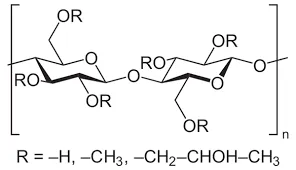
Dec . 20, 2024 16:02 Back to list
Exploring the Applications and Benefits of RDP Polymer in Modern Industries
Exploring RDP Polymer A Versatile Material for Today’s Innovations
In the ever-evolving landscape of materials science, polymers stand out as one of the most versatile and widely used categories of materials. Among the many polymers, RDP (Redispersible Polymer Powder) has emerged as a significant player, especially in the construction and coatings industries. Produced through a unique process that turns emulsified polymers into powder form, RDP serves a multitude of purposes and offers numerous benefits that cater to the demands of modern applications.
What is RDP Polymer?
RDP, or Redispersible Polymer Powder, is a high-performance polymer that is typically derived from vinyl acetate, ethylene, or other monomers. When combined with water, RDP can be redispersed into a liquid form, thereby forming a film that enhances the properties of construction materials such as mortars, adhesives, and other cementitious mixtures. This characteristic allows manufacturers to ship products in a dry, concentrated form while retaining their functional properties until they are mixed and applied.
Advantages of Using RDP
The use of RDP in construction materials offers several benefits. One of the primary advantages is improved adhesion. RDP enhances the bond strength between mortar and various substrates, ensuring that finishes remain durable even under stress. This is especially crucial in environments susceptible to temperature fluctuations and moisture exposure.
Another key advantage of RDP is its ability to enhance flexibility. Materials that incorporate RDP can better withstand movements and vibrations, reducing the risk of cracks and structural failures. This feature is essential for applications in earthquake-prone areas or in buildings that undergo frequent thermal expansion and contraction.
In addition, RDP contributes to water resistance. By reducing water ingress into the substrate, RDP-loaded materials can maintain their integrity in adverse weather conditions. This makes RDP especially valuable in external applications, such as facade coatings and outdoor tiles, where exposure to the elements is a constant challenge.
rdp polymer

Applications of RDP
RDP finds its place in a variety of applications across different sectors. In the construction industry, it is commonly added to tile adhesives, self-leveling compounds, repair mortars, and stuccos. These materials benefit from the improved workability and extended open time that RDP provides, allowing for more forgiving application processes.
Furthermore, RDP is increasingly being utilized in the production of paints and coatings. It enhances the film formation, drying speed, and durability of coatings, ensuring that the final product is aesthetically pleasing and long-lasting. The versatility of RDP ensures that it can be tailored to meet specific requirements, making it a favorite among formulators.
Sustainability and RDP
As the world grapples with environmental concerns, the sustainability of materials has taken center stage. RDP contributes positively to sustainable practices in construction. By allowing for the formulation of low-VOC (volatile organic compound) products, RDP helps in creating healthier indoor environments and mitigating air quality issues. Moreover, its ability to improve the performance of building materials can lead to longer-lasting constructions, reducing the need for repairs and replacements.
Future Outlook
The future of RDP polymers looks promising. As construction techniques continue to advance and environmental standards become more stringent, the demand for innovative materials like RDP is expected to grow. Ongoing research in polymer chemistry may yield even more efficient formulations, expanding the scope of applications and enhancing performance in ways we have yet to imagine.
In conclusion, RDP polymer represents a remarkable development in the domain of materials science. Its unique properties and wide range of applications make it an invaluable asset in construction, coatings, and beyond. With the increasing focus on sustainability and innovation, RDP will likely continue to play an essential role in shaping the materials of the future, adapting to meet the challenges and demands of various industries. The ongoing research and development in RDP polymer will undoubtedly lead to even more groundbreaking uses, solidifying its place as a cornerstone of modern material technology.
-
Versatile Hpmc Uses in Different Industries
NewsJun.19,2025
-
Redispersible Powder's Role in Enhancing Durability of Construction Products
NewsJun.19,2025
-
Hydroxyethyl Cellulose Applications Driving Green Industrial Processes
NewsJun.19,2025
-
Exploring Different Redispersible Polymer Powder
NewsJun.19,2025
-
Choosing the Right Mortar Bonding Agent
NewsJun.19,2025
-
Applications and Significance of China Hpmc in Modern Industries
NewsJun.19,2025







